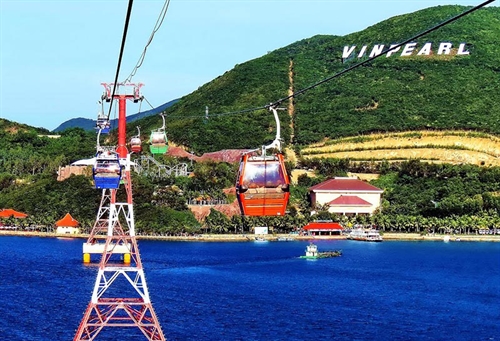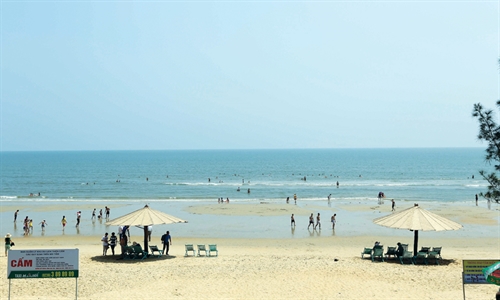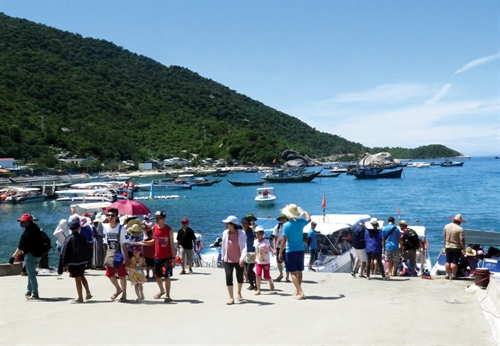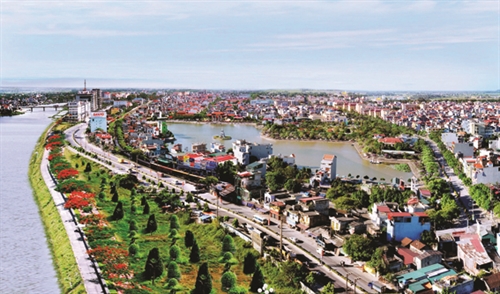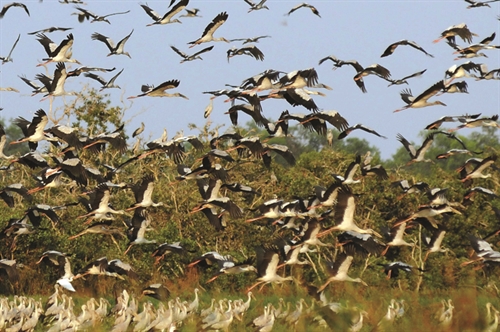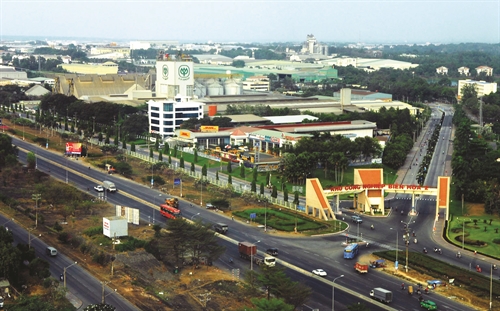Located in the southern key economic region of the country, Tay Ninh province shares a borderline of 240km with three Cambodian provinces of Svay Rieng, Tbong Khmum and Prey Veng, borders Binh Duong and Binh Phuoc provinces to the east and Ho Chi Minh City and Long An province to the south. The province has a natural area of 4,035 square kilometers and a population of some 1.1 million (according to the 2014 statistics).
Tay Ninh is home to Kinh (Viet) people as the most populous and 28 other ethnic groups, including Khmer, Cham, Xtieng and Hoa, and nine religions with some 379,750 Caodaists, 95,670 Buddhists and 32,700 Christians. It has a provincial city with the same name and eight districts, namely Ben Cau, Chau Thanh, Duong Minh Chau, Go Dau, Hoa Thanh, Tan Bien, Tan Chau and Trang Bang.
FDI attractions
The province has two international border gates of Moc Bai and Xa Mat and one auxiliary border-gate of Tan Nam planned to be upgraded into an international one. In the future, Tay Ninh will also have four major domestic border gates and 11 auxiliary border gates to serve foreign trade in the region, especially with Cambodia. Situated 100 km northwest of Ho Chi Minh City, Tay Ninh is an important gate connecting Ho Chi Minh City and Cambodian capital of Phnom Penh.
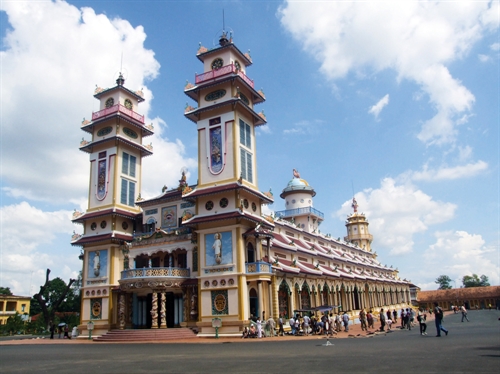 |
The Great Divine Temple of Caodaism in Tay Ninh province__Photo: VNA |
At present, Tay Ninh province boasts seven industrial parks, two economic zones and 18 industrial clusters.
According to Dang Ngoc Nhu Thuong of the investment cooperation section of the Tay Ninh Planning and Investment Department, in the first two months of the year, the province granted investment licenses to five new foreign direct investment (FDI) projects totaling USD 19.72 million and permitted four existing projects to add USD 11.98 million to their registered investment capital. The newly licensed projects which are specialized in manufacturing fiber, footwear, packaging materials, suitcases and carpet include two from Hong Kong and the others from China and Japan and one joint venture between Vietnamese and Chinese enterprises.
Tay Ninh ranked 15th out of 63 provinces and cities in attracting FDI capital, reported the Foreign Investment Agency (FIA) under the Ministry of Planning and Investment.
By the end of February 2018, the province attracted a total of 275 FDI projects with a combined registered capital of USD 5.16 billion. At present, China is the biggest investor in the province with a total investment capital of USD 2.3 billion and focusing on textile and garment.
Last year, the local authorities have paid special attention to investment promotion activities. It released video clips showing the province’s potential and strengths and fields calling for investment and sent delegations to India, China, the Republic of Korea (RoK), Japan and many other countries to promote the province’s image and investment potential.
The province prioritizes investment in hi-tech, energy saving and environment-friendly projects and has set forth a target of USD 1,069 million in FDI attraction this year.
To achieve the target, the province will effectively implement the investment promotion program and hold regular dialogues with investors to receive their recommendations and address their problems, particularly in the procedures for grant of investment certificates, ground clearance and land lease.
To attract investment in Moc Bai and Xa Mat border-gate economic zones and industrial parks and clusters, the province has offered numerous incentives to investors. Regarding taxation, an investment project with a total investment capital of at least VND 6 trillion disbursed within three years since being granted an investment certificate and over 3,000 workers is entitled to corporate income tax exemption for four years since the generation of taxable income and a 50-percent tax reduction for subsequent nine years. Investors in manufacturing products currently unavailable in the country will enjoy the same tax incentives.
In addition, investors in Moc Bai and Xa Mat border-gate economic zones will enjoy land rental exemption for the whole duration of their projects.
Tourism potential
Tay Ninh province is an ideal place for spiritual and relic tours. It is well known for Ba Den mountain, which looks like a conical hat and is the rooftop of the southeastern region at a height of 986 m. It boasts many attractive tourist spots, including the Caodaism Great Temple - the cathedral of Caodaism in Hoa Thanh district, the 27,000 hectare Dau Tieng reservoir - the biggest one in the country, and Lo Go-Xa Mat national park in Tan Bien district.
Its well-known specialties include Ba Den mountainous lizards, “banh canh Trang Bang” (rice spaghetti) and “banh trang phoi suong Trang Bang” (griddle cake dried in the early morning to catch dewdrops).
The tourism management section of the Tay Ninh Culture, Sports and Tourism Department reported that the Ba Den mountain tourist site welcomed more than 1,152,400 foreign and domestic visitors in the first two months of 2018.
The province’s hospitality sector has recently formed the Tourism Development Steering Committee and a tourism development working group. It has successfully organized an international symposium entitled “Tay Ninh tourism: potential, strengths and opportunities” and attended many domestic and foreign tourist fairs.
In addition, Tay Ninh inked tourism cooperation deals with Cambodia’s border provinces and RoK’s Gimhae and Chungju cities.
At present, the province has 603 guest houses, eight two-star hotels and 31 one-star hotels. By the end of this year, property developer Vingroup is expected to put into operation one five-star hotel in Tay Ninh city.
To develop tourism into a spearhead sector, Deputy General Director of the Vietnam National Administration of Tourism Ha Van Sieu has suggested the province’s focus on cultural and historical tourist products as well as border-gate, shopping and caravan tours.
Vietnam Tourism Association President Nguyen Huu Tho has also recommended Tay Ninh to develop nine tourist products, including investment in four- and five-star hotels, preservation of the Caodaism Great Temple - a unique architectural and cultural work in the world, development of farm, homestay and ecological tours.
The province expects to receive 2.85 million tourist arrivals, including around 34,000 foreigners and earn a gross profit of VND 935 billion this year.
